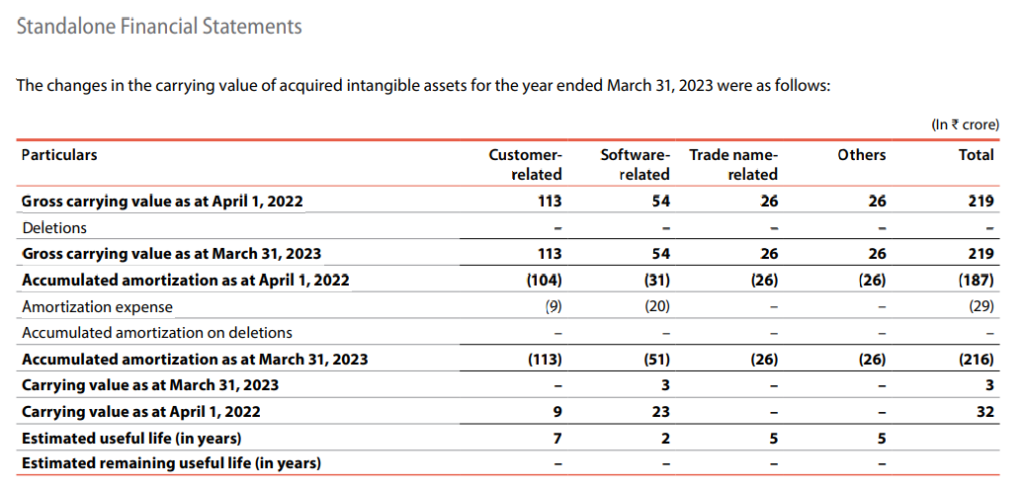The post NFRA Has Issued an Inspection Report on an Audit Firm for Failing to Comply With Quality, Independence, and Legal Requirements appeared first on Taxmann Blog.
]]>
NFRA has released the inspection report for M/s SRBC & Co. LLP, following an audit quality inspection conducted in 2024. The report evaluates the firm’s adherence to auditing standards and regulations, with a particular focus on the firm’s quality control systems and its responses to prior deficiencies. It identifies significant concerns in areas such as auditor independence, leadership structure, audit documentation, and specific audit procedures related to related party transactions, internal financial controls over revenue, and impairment of non-financial assets. Although the firm made attempts to remediate some issues, the report recommends further improvements, particularly in strengthening independence policies and enhancing documentation practices, to ensure full compliance with the applicable laws and standards.
Click Here To Read The Full Story
The post NFRA Has Issued an Inspection Report on an Audit Firm for Failing to Comply With Quality, Independence, and Legal Requirements appeared first on Taxmann Blog.
]]>The post NFRA Releases Minutes of 20th Meeting, Recommends Ind AS 21 Amendment on “Lack of Exchangeability” appeared first on Taxmann Blog.
]]>
The National Financial Reporting Authority (NFRA) released the minutes of its 20th meeting, which took place virtually on February 24, 2025. The meeting included discussions on various key issues, particularly focusing on the proposed amendment to Ind AS 21, The Effects of Changes in Foreign Exchange Rates, to address the issue of “lack of exchangeability.” This proposal, aligned with international standards, was agreed upon with a minor editorial enhancement, and NFRA recommended it to the Ministry of Corporate Affairs (MCA) for approval. NFRA also urged the MCA to expedite the notification of the amendment, as it is set to take effect on April 1, 2025.
Click Here To Read The Full Story
The post NFRA Releases Minutes of 20th Meeting, Recommends Ind AS 21 Amendment on “Lack of Exchangeability” appeared first on Taxmann Blog.
]]>The post Taxmann’s Analysis | Intangible Assets Under Ind AS 38 – FRRB Observations and Guidance appeared first on Taxmann Blog.
]]>
This article highlights the importance of intangible assets in financial reporting under Ind AS 38, emphasising their role in company valuations and the need for accurate disclosure. Real-world cases involving major tech companies demonstrate both the benefits of proper intangible asset reporting and the risks of non-compliance, including investor scepticism and regulatory scrutiny. Key observations by the Financial Reporting Review Board (FRRB) cover issues such as goodwill disclosure, R&D expense classification, reconciliation of carrying amounts, and clarity on whether intangible assets are internally generated or acquired. Adhering to best practices in disclosure and compliance not only ensures transparency but also strengthens corporate governance, investor trust, and overall financial integrity.
Table of Contents
- Inadequate Disclosure of Goodwill
- Misclassification of Research and Development Expenditure
- Non-disclosure of Reconciliation of Intangible Assets
- Omission of Amortization Method and Useful Life
- Lack of Clarity on Internally Generated vs. Acquired Intangible Assets
- Conclusion
Intangible assets play a vital role in financial reporting, offering insights into a company’s intellectual and creative wealth. However, accurate recognition, measurement, and disclosure of these assets remain a challenge. The Financial Reporting Review Board (FRRB) of ICAI has identified several discrepancies in the financial statements of various companies regarding compliance with the Indian Accounting Standards (Ind AS), particularly Ind AS 38 on intangible assets.
Real-life instances have demonstrated the importance of proper reporting. For example, technology giants like Infosys and TCS have successfully leveraged intangible assets, such as proprietary software and patents, to boost their valuations. Conversely, companies failing to provide adequate disclosures have faced regulatory scrutiny and investor scepticism. Lack of proper disclosures on intangible assets can lead to financial misstatements, impacting stock valuations and stakeholder trust. This article presents key observations by the FRRB and guides ensuring compliance.
1. Inadequate Disclosure of Goodwill
1.1 Observation
A company’s financial statements reflect a substantial amount of goodwill. However, they fail to disclose the source of goodwill. If the goodwill was internally generated, it should not have been recognised as an asset under Ind AS 38. If acquired in a business combination, relevant disclosures as per Ind AS 103 were required but missing.
1.2 Relevant Provisions
Ind AS 38, Intangible Assets
Paragraph 48 – “Internally generated goodwill shall not be recognised as an asset.”
Ind AS 103, Business Combination
Paragraph B67 – “To meet the objective in paragraph 61, the acquirer shall disclose the following information for each material business combination or in the aggregate for individually immaterial business combinations that are material collectively –
(d) a reconciliation of the carrying amount of goodwill at the beginning and end of the reporting period showing separately”
1.3 Implication & Guidance
Companies must clearly disclose the source of goodwill and comply with the impairment testing requirements under Ind AS 36. If the goodwill was internally generated, it should not have been recognised as an asset under Ind AS 38. On the other hand, if goodwill arises from a business combination, Ind AS 103 mandates specific disclosures, which should be incorporated in the financial statements to ensure transparency and compliance.
The extract of notes forming part of consolidated financial statements of TCS Limited for the year ended 31.03.2024 showing the appropriate goodwill disclosure, i.e. acquired under business combination, is as follows –

2. Misclassification of Research and Development Expenditure
2.1 Observation
The financial statements classified research and development (R&D) costs into revenue and capital expenditure rather than distinguishing between the research phase and development phase. As per Ind AS 38, research expenses (revenue or capital) should be immediately expensed, while development costs may be capitalised only if recognition criteria are met.
2.2 Relevant Provision
Ind AS 38, Intangible Assets
Paragraph 54 – “No intangible asset arising from research (or from the research phase of an internal project) shall be recognised. Expenditure on research (or on the research phase of an internal project) shall be recognised as an expense when it is incurred.”
Paragraph 57 – “An intangible asset arising from development (or from the development phase of an internal project) shall be recognised if, and only if, an entity can demonstrate all of the following –
(a) the technical feasibility of completing the intangible asset so that it will be available for use or sale.
(b) its intention to complete the intangible asset and use or sell it.
(c) its ability to use or sell the intangible asset.
(d) how the intangible asset will generate probable future economic benefits. Among other things, the entity can demonstrate the existence of a market for the output of the intangible asset or the intangible asset itself or, if it is to be used internally, the usefulness of the intangible asset.
(e) the availability of adequate technical, financial, and other resources to complete the development and to use or sell the intangible asset.
(f) its ability to measure reliably the expenditure attributable to the intangible asset during its development.”
2.3 Implication & Guidance
Companies should classify R&D expenses correctly, i.e. research expenses must be expensed, and development costs should only be capitalised if all conditions under Ind AS 38 are satisfied. Companies should clearly mention in their accounting policy about R&D expenses in the annual reports. Misclassification can lead to misrepresentation of financial performance and asset values.
3. Non-disclosure of Reconciliation of Intangible Assets
3.1 Observation
A company reported ‘Intangible Assets Under Development’ with a significant increase in closing balance. However, it failed to disclose a reconciliation of carrying amounts at the beginning and end of the year as mandated by Ind AS 38.
3.2 Relevant Provision
Ind AS 38, Intangible Assets
Paragraph 118 – “An entity shall disclose the following for each class of intangible assets, distinguishing between internally generated intangible assets and other intangible assets –
(e) a reconciliation of the carrying amount at the beginning and end of the period showing:
(i) additions, indicating separately those from internal development, those acquired separately, and those acquired through business combinations.
(ii) assets classified as held for sale or included in a disposal group classified as held for sale in accordance with Ind AS 105 and other disposals;
(iii) increases or decreases during the period resulting from revaluations under paragraphs 75, 85 and 86 and from impairment losses recognised or reversed in other comprehensive income in accordance with Ind AS 36 (if any);
(iv) impairment losses recognised in profit or loss during the period in accordance with Ind AS 36 (if any);”
An extract from the Standalone Financial Statements of Infosys Limited for the year ended 31.03.2024 reflecting the reconciliation of intangible assets at the beginning and end of the year is as follows –

3.3 Implication & Guidance
Companies should ensure proper reconciliation of intangible assets in financial statements, clearly distinguishing between internally generated and acquired assets. This transparency aids investors and stakeholders in understanding asset movements and valuation changes.
4. Omission of Amortization Method and Useful Life
4.1 Observation
A company recognised computer software as an acquired intangible asset but failed to disclose the amortisation method and useful life of the intangible asset, contrary to Ind AS 38 requirements.
4.2 Relevant Provision
Ind AS 38, Intangible Assets
Paragraph 118 – “An entity shall disclose the following for each class of intangible assets, distinguishing between internally generated intangible assets and other intangible assets –
(a) whether the useful lives are indefinite or finite and, if finite, the useful lives or the amortisation rates used;
(b) the amortisation methods used for intangible assets with finite useful lives.”
The extract of accounting policy from the annual report of Infosys Limited for the year ended 31.03.2024 reflecting the amortisation method and useful life is enclosed under –

4.3 Implication & Guidance
To ensure compliance, companies must disclose the amortisation method and useful life of intangible assets in financial statements. This information is crucial for assessing asset valuation and future financial performance.
5. Lack of Clarity on Internally Generated vs. Acquired Intangible Assets
5.1 Observation
It was noted by the FRRB that the company has recognised ‘computer software’ and ‘model designs’ as Intangible Assets. However, the company has not provided a clear distinction of whether these intangible assets were internally generated or acquired, as required by Ind AS 38.
5.2 Relevant Provision
Ind AS 38, Intangible Assets
Paragraph 118 – “An entity shall disclose the following for each class of intangible assets, distinguishing between internally generated intangible assets and other intangible assets….”
5.3 Implication & Guidance
Companies should explicitly state whether their intangible assets are internally generated or acquired. This disclosure ensures compliance with Ind AS 38 and provides investors with clarity on the nature of the assets, which is crucial for financial analysis and decision-making.
6. Conclusion
The FRRB’s observations highlight widespread lapses in the financial reporting of intangible assets. These gaps can lead to financial misstatements, non-compliance penalties, loss of investor confidence, and reputational damage. Ensuring proper classification, disclosure, and valuation of intangible assets is not just a regulatory requirement but a critical aspect of sound corporate governance.
To address these issues, companies must establish strong internal controls, conduct periodic reviews, and implement rigorous financial reporting practices. Adopting best practices in intangible asset reporting enhances transparency, boosts investor trust, and strengthens compliance with Ind AS provisions. By proactively addressing these concerns, organisations can mitigate risks, ensure financial statement reliability, and maintain credibility in the eyes of regulators and stakeholders.
The post Taxmann’s Analysis | Intangible Assets Under Ind AS 38 – FRRB Observations and Guidance appeared first on Taxmann Blog.
]]>The post [Global Financial Insights] IFRIC Agenda Decisions Under IASB Review – March 2025 Update and More appeared first on Taxmann Blog.
]]>
Global Financial Insights is a weekly feature for the Accounts and Audit Module subscribers of Taxmann.com. It provides you with the latest updates on financial reporting and auditing practices from across the globe. This week’s financial updates discuss about the following:
- IFRIC agenda decisions under IASB Review – March 2025 Update
- IASB March 2025 Meeting Update
- ISSB March 2025 Update
- IFRS Foundation to release IFRS Accounting Taxonomy 2025
- FRC shares new update on capital restructuring for UK audit firms
- FRC imposes sanctions on PwC and auditor over Wyelands Bank audit failures
- FRC updates reflecting amendments to company size thresholds
- PCAOB sanctions audit firm and auditor for multiple audit deficiencies
Click Here To Read The Full Article
The post [Global Financial Insights] IFRIC Agenda Decisions Under IASB Review – March 2025 Update and More appeared first on Taxmann Blog.
]]>The post Supreme Court Clears Path for NFRA to Tighten Oversight on Auditors, Stays Enforcement of Final Orders appeared first on Taxmann Blog.
]]>
The Supreme Court has allowed the National Financial Reporting Authority (NFRA) to proceed with disciplinary actions against chartered accountants and audit firms while temporarily staying the enforcement of final orders. This decision follows NFRA’s appeal against a Delhi High Court ruling, which had questioned the regulator’s structure and procedures. The Supreme Court’s ruling permits NFRA to continue investigations and hearings but restricts it from passing or enforcing final decisions until further notice.
Click Here To Read The Full Story
The post Supreme Court Clears Path for NFRA to Tighten Oversight on Auditors, Stays Enforcement of Final Orders appeared first on Taxmann Blog.
]]>The post Will CS and CMA Be Allowed for Income Tax Audits? Lok Sabha’s Select Committee Engages EY to Review and Submit Its Report appeared first on Taxmann Blog.
]]>
The Lok Sabha’s Select Committee has engaged EY to review the curriculum of CS, CMA, and CA professionals to assess whether CS and CMA should be allowed to conduct income tax audits, a role currently limited to CAs. This move comes as CS and CMA professionals push for their inclusion under the Income Tax Bill, 2025. While the Institute of Cost and Management Accountants of India (ICMAI) supports their recognition, citing their expertise in taxation and auditing, the Institute of Chartered Accountants of India (ICAI) opposes it, arguing that tax audits require specialized knowledge that only CAs possess. The final decision will be based on EY’s findings, which could significantly impact India’s tax audit regulations.
Click Here To Read The Full Story
The post Will CS and CMA Be Allowed for Income Tax Audits? Lok Sabha’s Select Committee Engages EY to Review and Submit Its Report appeared first on Taxmann Blog.
]]>The post Accounting Treatment of Sales Returns Agreed Upon After the Balance Sheet Date Under Ind AS Framework appeared first on Taxmann Blog.
]]>
This document analyses the accounting treatment of different types of sales returns under the Indian Accounting Standards, with a focus on Ind AS 115, Ind AS 10, and Ind AS 2. The primary issue addressed is how to appropriately account for sales returns that occur both within and outside the agreed return terms, including those accepted after the balance sheet date. It explores whether such returns warrant revenue reversal or only disclosure, based on the timing of the return and the existence of any contractual or constructive obligations at the reporting date.
The analysis covers three key scenarios: first, sales returns that occurred in the same financial year but beyond the contractual return period, raising questions about the validity of revenue recognition under Ind AS 115; second, returns related to sales recorded in a prior financial year but reversed in the current year, which involves evaluating whether these represent prior period errors or valid changes in estimates; and third, post–balance sheet date returns accepted without a pre-existing obligation, which brings into focus whether these are adjusting or non-adjusting events under Ind AS 10. Additionally, the document considers the appropriate valuation of returned inventory under Ind AS 2, examining whether it should be measured at cost or at Net Realizable Value (NRV).
Click Here To Read The Full Story
The post Accounting Treatment of Sales Returns Agreed Upon After the Balance Sheet Date Under Ind AS Framework appeared first on Taxmann Blog.
]]>The post Pro-Rata Allocation of Unidentifiable Impairment Loss on the Classification of Assets as Held for Sale in Line With Ind AS 105 appeared first on Taxmann Blog.
]]>
When a company plans to sell a business unit or group of assets, and the sale is highly probable with the assets ready for immediate disposal, Ind AS 105, Non-current Assets Held for Sale and Discontinued Operations requires them to be classified as held for sale. Once classified, these assets are measured at the lower of their carrying amount and fair value less costs to sell. If the fair value is lower, the difference is recognised as an impairment loss.
Any impairment that can be directly linked to specific assets should be recognised first. But what about the remaining loss? This portion, which cannot be attributed to specific items, needs thoughtful allocation—typically across the remaining assets in a consistent manner. This is where judgment and careful allocation come into play. Should it be spread across other assets? And if so, how should that allocation be approached? In this case Ind AS 105 provides guidance on how the remaining impairment loss should be allocated.
Click Here To Read The Full Story
The post Pro-Rata Allocation of Unidentifiable Impairment Loss on the Classification of Assets as Held for Sale in Line With Ind AS 105 appeared first on Taxmann Blog.
]]>The post ICMAI Releases Exposure Draft of Revised Code of Ethics for Members appeared first on Taxmann Blog.
]]>
ICMAI has released an Exposure Draft of the revised Code of Ethics for its members through the Cost Auditing and Assurance Standards Board (CAASB). The draft aims to strengthen ethical standards for Cost and Management Accountants (CMAs) and align them with international norms.
It outlines five fundamental principles—integrity, objectivity, professional competence and due care, confidentiality, and professional behavior—and introduces a framework for addressing threats to ethical compliance. Key updates include guidance on conflicts of interest, ethical issues related to technology, and non-compliance with laws (NOCLAR). ICMAI is accepting feedback until April 2, 2025, via caasb@icmai.in.
Click Here To Read The Full Story
The post ICMAI Releases Exposure Draft of Revised Code of Ethics for Members appeared first on Taxmann Blog.
]]>The post [Global Financial Insights] FRC Releases Guidance and Summary Document to Help SMEs Understand Audit Requirements and More appeared first on Taxmann Blog.
]]>
Global Financial Insights is a weekly feature for the Accounts and Audit Module subscribers of Taxmann.com. It provides you with the latest updates on financial reporting and auditing practices from across the globe. Here is this week’s financial update:
1. FRC releases guidance for SMEs on audit requirements
The Financial Reporting Council (FRC) has published a guidance document to help small and medium-sized enterprises (SMEs) understand audit requirements. It explains the role of International Standards on Auditing (ISAs), their importance in ensuring accurate financial reporting, and how they can be applied proportionally to SMEs in line with international best practices.
2. FRC initiates investigations into audits by Macintyre Hudson LLP and Ernst & Young LLP
The Financial Reporting Council (FRC) has launched investigations into the audits conducted by MacIntyre Hudson LLP and Ernst & Young LLP (EY) concerning separate entities. The investigation into EY focuses on audits of a public interest entity and a related non-PIE entity, while the investigation into MacIntyre Hudson concerns the audit of ISG Limited’s consolidated financial statements. Both investigations will be carried out under the FRC’s Audit Enforcement Procedure.
3. PCAOB releases guidance to help auditors improve form AP compliance
The Public Company Accounting Oversight Board (PCAOB) has released a publication aimed at assisting auditors with accurately completing Form AP. The guidance addresses common deficiencies such as incorrect reporting of audit hours and omissions, and recommends best practices such as using structured templates and conducting independent reviews to ensure compliance with PCAOB rules and standards.
4. IAASB and IAF strengthen collaboration to enhance sustainability assurance
The IAASB and IAF formalized their collaboration to improve sustainability assurance and build trust in corporate sustainability disclosures. The partnership aims to ensure consistency in global assurance practices, with IAF supporting the use of IAASB’s International Standard on Sustainability Assurance 5000 (ISSA 5000) in accredited verification activities.
Click Here To Read The Full Article
The post [Global Financial Insights] FRC Releases Guidance and Summary Document to Help SMEs Understand Audit Requirements and More appeared first on Taxmann Blog.
]]>